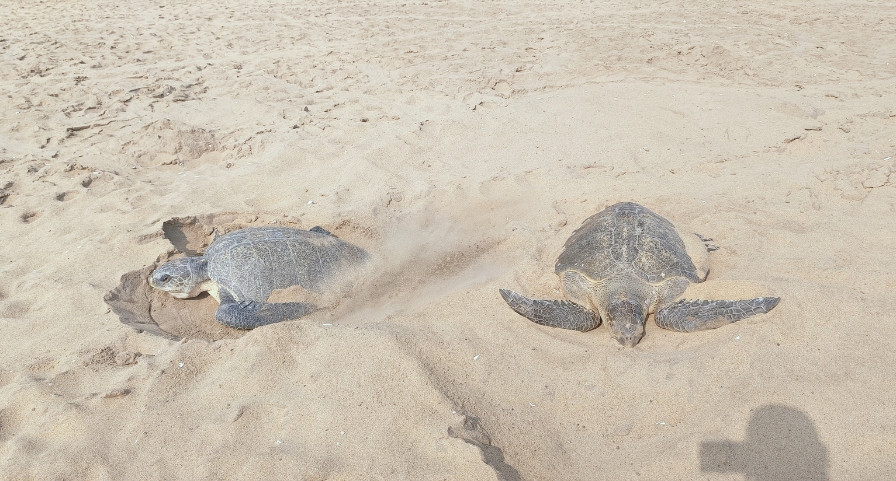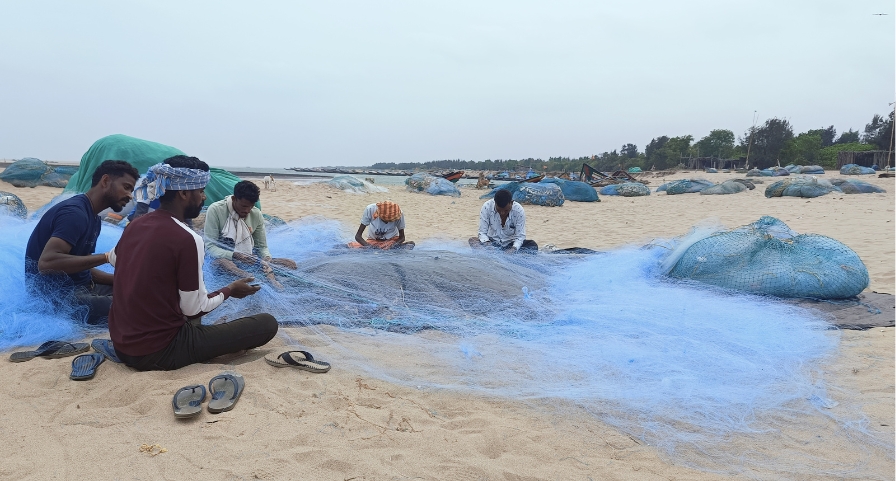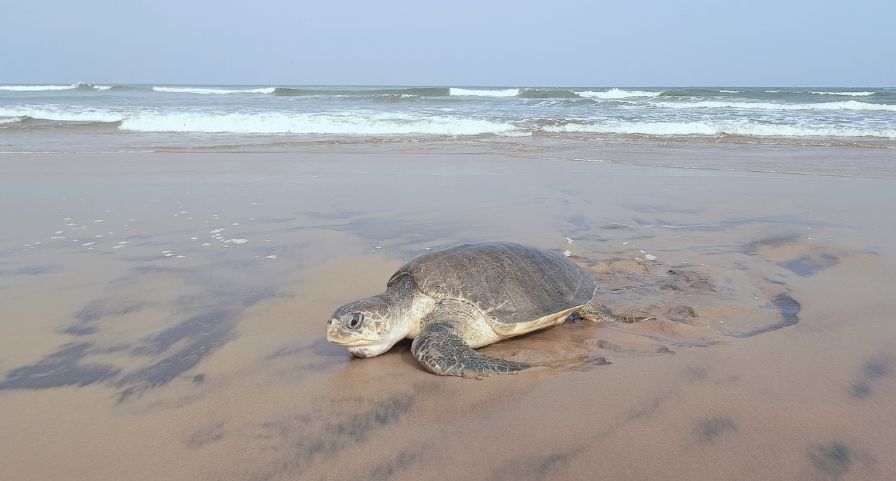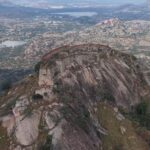Every year, the sandy shores of the Rushikulya river estuary in Odisha’s Ganjam district transform into a bustling maternity ward, as thousands of Olive Ridley turtles arrive for their mass-nesting. And, Odisha heartily greets these marine guests from the Pacific.
Imagine how much patience it requires to swim across two oceans spanning thousands of kilometres just to lay eggs in a distant but favourable place. But it’s a normal thing for Olive Ridley turtles, who come to Odisha every year for mass-nesting. This “arribada” (a Spanish term meaning “arrival”), is homecoming for thousands of marine turtles, returning to the beaches where they were once born.

As early as November, these turtles begin appearing in offshore waters, with mating taking place near the coast. By mid-February, the mass-nesting process starts.
Sitesh Kumar Suara, a tourist from Ganjam district, became speechless after witnessing this nature’s splendid spectacle for the first time. He says, “Witnessing the nesting of Olive Ridley turtles live has been one of the most awe-inspiring experiences of my life. I feel very fortunate to see this spectacular phenomenon of nature, and it was a wonderful moment for me to witness these marine creatures emerge from the sea under the twilight, dig the nests through their flippers, and lay eggs.”
Also read: Battling extinction: Fight to save the elusive Batagur baska
A transoceanic voyage through magnetic navigation
How do turtles navigate their journeys across vast expanses of oceanic water without landmarks or GPS? They do this using the earth’s magnetic field and ocean waves.

Sea turtles have the ability to detect variations in the magnetic fields in different locations, enabling them to compile a “magnetic map” for navigating to specific nesting areas. As hatchlings, they are believed to learn or imprint the magnetic address of the beach where they hatched and, as adults, swim back to it years later to breed.
Conservation measures to protect eggs
According to the forest department, this year, above six lakh Olive Ridley turtles have arrived in Rushikulya rookery in Ganjam district. The forest department along with Indian Coast Guard officials have prepared to protect these turtles, to ensure the safety of eggs. A 9-km protective fencing has been created from New Podampeta beach to Prayagi along the Bay of Bengal coast to safeguard the eggs from predators.
Temporary ban on fishing
To protect the endangered Olive Ridley turtles, the Odisha government has imposed a ban on fishing activity for seven months in the Rushikulya river mouth. It aims to prevent the death of turtles from fishing nets and trawlers. The Odisha government is providing annual financial assistance of Rs. 15,000 per fishermen’s family affected by the temporary ban on fishing.
Every year, we give up fishing during the period of mass-nesting and hatching. Our fishermen community also co-operates with the authority to protect these turtles
However, the compensation amount is not sufficient to sustain a family, taking into account the current market price, says Subash Behera, a fisherman from New Podampeta village.
Subash adds, “Every year, we give up fishing during the period of mass-nesting and hatching. Our fishermen community also co-operates with the authority to protect these turtles. Because of the ban on fishing, we are grappling with hardships. In return, we receive only a small amount of financial support. It becomes very difficult to manage a family with this meagre assistance.”
Also read: 26-year-old Puri youth leads Odisha’s green revolution
Need for stringent vigilance
Despite the safety measures taken by authorities, there remain some significant loopholes in the conservation of these marine creatures. Increasing human disturbances along the beaches and negligence in monitoring by the guards pose a serious threat to Olive Ridley turtles. Predator birds and street dogs often dig up and eat turtle eggs before they hatch.

Swagat Kumar Tripathi, a visitor from Berhampur, feels the necessity of more vigilance and strict action against those breaching the Wildlife Protection Act. He said, “Unauthorised persons and tourists should not be allowed inside the nesting area. The breeding ground is also not fully fenced and left open to tourists as children are playing with these turtles. There are better ways of witnessing the mass-nesting by watching them from a safe distance without disturbing the turtles. As responsible citizens, we must protect the Olive Ridley turtles, because they choose the Odisha coast as their nesting ground.”
The annual mass-nesting at Rushikulya is a humble reminder of nature’s grandeur. After an incubation period of 45 to 60 days, tiny hatchlings emerge from the eggs. As thousands of tiny turtles crawl towards the waves, they carry with them the hopes of survival for future generations, and people of Odisha wait for another year to welcome these sea turtles’ homecoming.
Also read: Meet India’s youth climate activists with rural roots
The lead photo at the top shows the arrival of an Olive Ridley turtle at the Rushikulya estuary. (Photo by Satyabrata Panigrahy)
Satyabrata Panigrahy is a feature writer and an independent researcher who writes mostly on science, art and culture.








